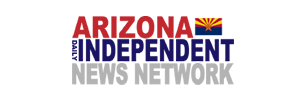
As Arizona State prepares for a road trip to Boulder, Colorado, to play the 3-8 Buffaloes, coach Kenny Dillingham used his weekly press conference to make a recruiting pitch.
It wasn’t just aimed at players headed for college football’s transfer portal. He also made his case to local business owners.
“If you’re a local company and you want to engage the community, or if you’re a new business and you want to get people involved, what better way to get your brand out there to the city than utilizing our players?” Dillingham asked.
It was a part of a two-minute rant by Dillingham during which he built up his players and team to Arizona restaurants, car dealerships and any other businesses interested in helping the cause.
The Sun Devils are 7-3 (5-2 Big 12) after escaping West Virginia in a 25-23 win. Meanwhile, the Buffs lost to the Mountaineers 29-22 before having a bye on the schedule last week.
ASU’s on-field production is nearly the inverse of Colorado’s.
And the same can be said about their pocketbooks.
Colorado coach Deion Sanders rewards his players with an average of $123,000 in NIL deals, according to Rivals.com. That’s $100,000 more than Dillingham’s players get on average in Tempe.
But, in an ever-changing college football landscape, Dillingham is urgently aware of his program’s need to evolve with the times.
To that end, he met with academic and athletic ASU officials before last week’s home game against West Virginia to develop a funding strategy to compete with schools like Colorado.
“I left that meeting knowing that the university is going to be very, very supportive of the football program,” Dillingham said. “We’re going to have the backing of the university just to be as successful and to be a competitive and successful program.”
Dillingham added that his program is a revenue-generator for the greater Phoenix area and the Sun Devils have taken significant steps toward his promise to “activate the Valley.”
With key players like wide receiver Jordyn Tyson and cornerback Keith Abney II most likely declaring for the NFL Draft in 2026, Dillingham is faced with the prospect of replenishing his roster with corresponding talent.
In today’s college football world, that takes money. It also takes agility.
The NCAA recently eliminated the spring transfer portal recruitment window. Now, schools have a 10-day period that opens Jan. 2, 2026 – one day after the College Football Playoff quarterfinals are completed – to recruit from the portal.
The new NCAA plan includes a month-long recruitment “dead period” in December, during which coaches can contact athletes but can’t hold on-campus or off-campus visits or evaluations.
Dillingham is uncertain how the new rules will work out, but he is confident about one thing:
“It’s going to be chaotic,” Dillingham said. “It’s like a mad dash to evaluate people and to call people to get information.”
No matter how hectic this new recruitment period gets, Dillingham and his staff have their sights set on a certain type of player.
“(If) a kid doesn’t want to be here, he shouldn’t be here. Like, this isn’t a hostage situation, right?” Dillingham said. “The last thing I want is to trick a kid to stay here … I want guys who 100% want to be here, want to graduate from here, want to become a legend here.”
He added that if a player does, in fact, love being a Sun Devil, he will consistently be exposed to NFL scouts and be part of a team that plays for the love of the game.
“We’ve had multiple scouts here almost every single day looking at both sides of the ball,” Dillingham said. “But I think the passion they have for football, I think it’s something that you can’t always see.”
